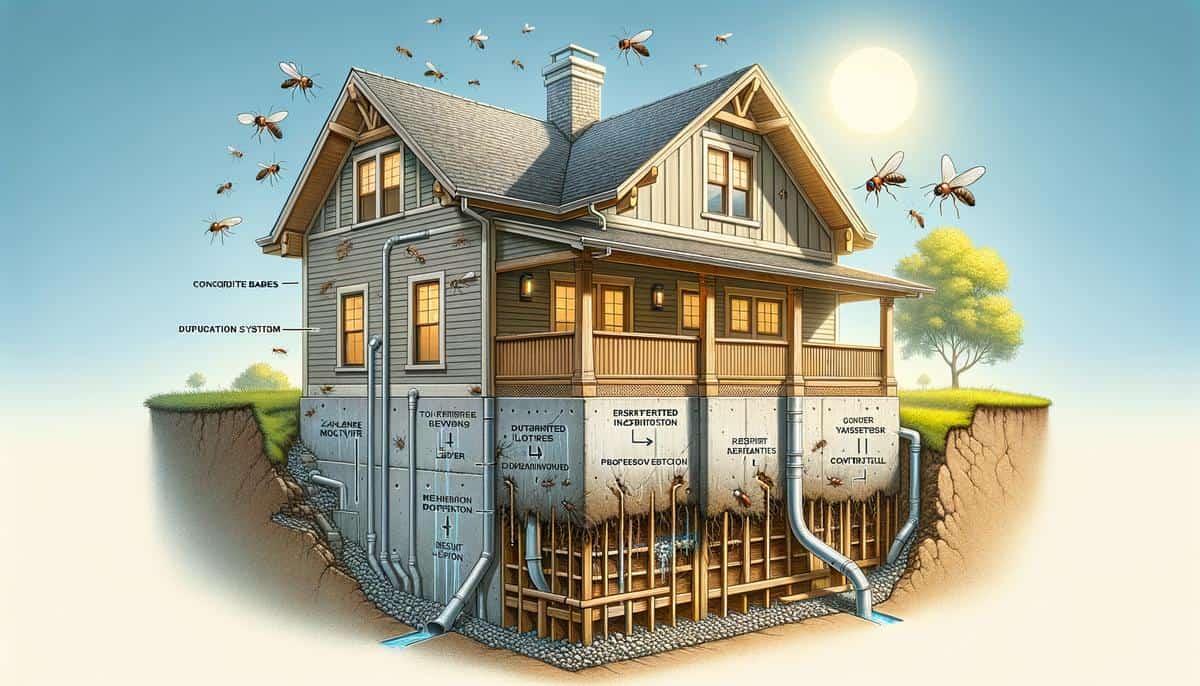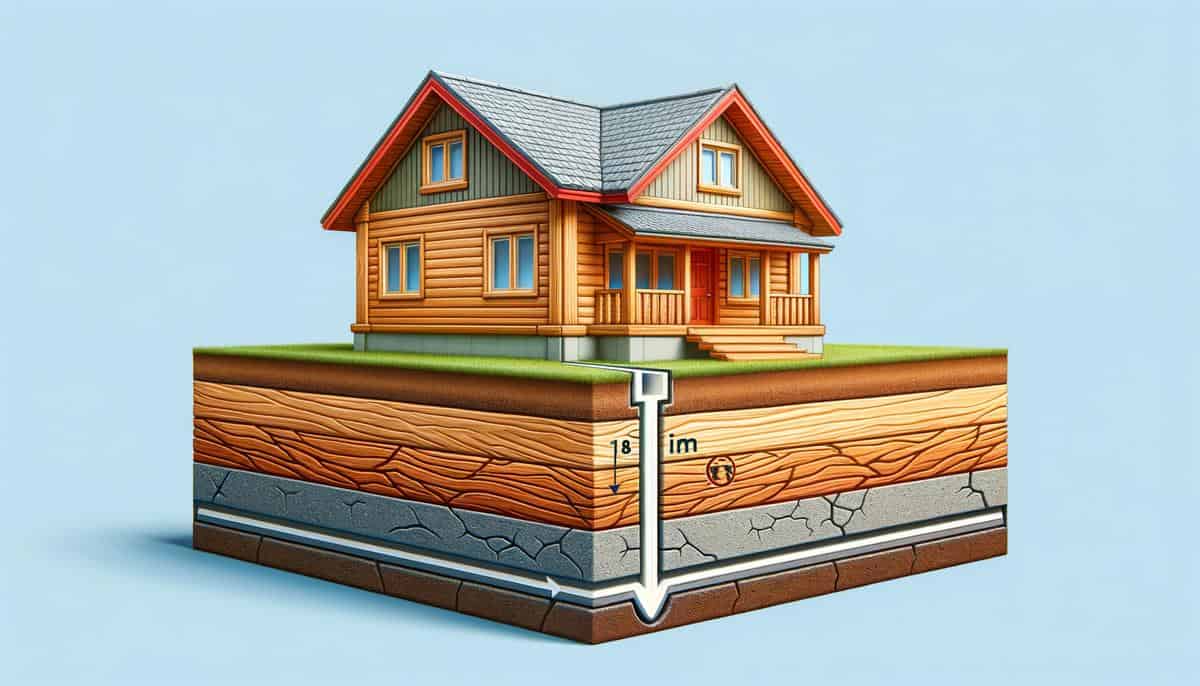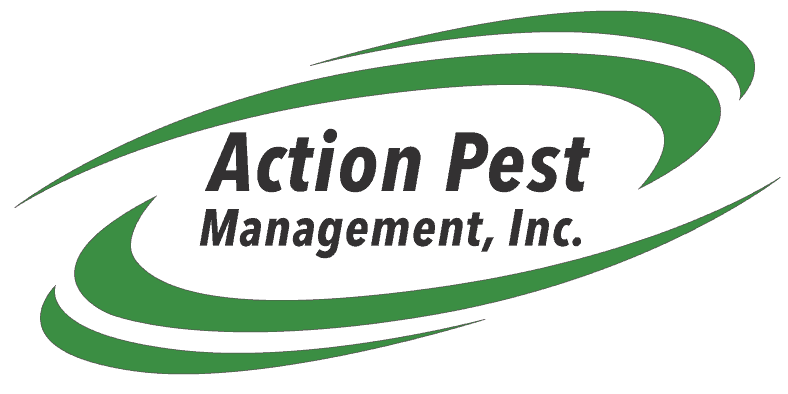
25 Mar Preventing Termite Home Invasion
Eliminate or Reduce Moisture
Reducing Moisture to Deter Termites
Termites thrive in moist environments, causing damage to homes by eating wood structures from the inside out. Managing moisture levels around your property can help deter their presence. Follow these steps to maintain a drier, termite-resistant surrounding.
- Fix Water Leaks: Inspect your home for signs of leaks, including pipes, faucets, and roofing. Promptly repair these leaks to prevent moisture buildup.
- Improve Drainage: Ensure your home’s drainage system functions correctly. Gutters and downspouts should channel water away from your home’s foundation. Install splash blocks or create a gentle slope around your house to further direct water away.
- Maintain Your Landscape: Trim back overgrown vegetation and consider using less mulch or opting for alternatives like pea gravel which does not retain moisture.
- Ventilation is Key: Incorporate adequate ventilation into crawl spaces, attics, and basements to circulate air and reduce humidity levels. Use dehumidifiers in particularly damp areas of the house.
- Inspect Outdoor Areas: Walk around your property to check for poor drainage or signs of standing water. Address these issues promptly to maintain a dry environment that is less inviting to termites.
Creating a termite-unfriendly environment by reducing moisture can help prevent potential damage and costly repairs. Consistently monitoring and maintaining a dry perimeter around your home is important in preventing termite infestations.1

Maintain Distance Between Soil and Wood
Ensuring a Gap Between Soil and Wood Portions of Your House
Maintaining a gap between the soil and any wood portions of your home is a smart way to discourage termites. When the soil is directly in contact with the wooden parts of your home, it keeps the area damp, creating an environment for termites to thrive and multiply.
Keeping an 18-inch gap between the soil and the wood portions of your house acts as a barrier. Termites aren’t great climbers when facing smooth surfaces like your home’s foundation. They can move through soil easily but hit a roadblock when they encounter a clear gap that they can’t easily bridge. This reduces their chance of finding a path into your home.2
This gap also makes it easier to spot termite activity. Mud tubes, a sign of termites, are more visible against the clear span of a foundation wall than against a backdrop of soil and debris. Regular monitoring becomes simpler, increasing your chances of catching and stopping termite activity before it leads to costly damage.
To create and maintain this protective gap:
- Pull back any soil or mulch lying directly against your wood sidings or foundation.
- Fill in low areas near your house with gravel or sand to assist in drainage and discourage termites.
- Remove any fallen leaves or garden debris from against your house, as these can hold moisture against the wood and attract termites.
Keeping soil away from wooden building parts helps prevent wood rot and keeps your house’s foundation drier and less prone to cracking.
Maintaining an 18-inch gap between your home’s wood and the soil is an important measure in protecting your home from the threat of termites. Routine inspections and vigilance combined with this gap can help keep your house safe.

Schedule Annual Professional Inspections
The gap between soil and wood offers a crucial defense against termites, but your mission to safeguard your home also means tapping into expert help with annual professional inspections. These inspections are valuable in your arsenal against termites.
Termite activity is notoriously difficult to detect before it becomes a full-blown infestation. Professional pest control experts, armed with experience and advanced tools, can spot early signs of termite presence that untrained eyes might miss.
During an annual inspection, the professional will thoroughly check your property, assessing both the exterior and interior, including hard-to-access spots where termites love to hide. They look for signs of termites, such as mud tubes, damaged wood, and swarmers. Spotting these signs early can make a difference between minor repairs and extensive renovations.3
If there is evidence of a termite problem, your pest control expert can recommend the most effective treatment strategies, such as applying termiticides or bait systems, halting the termites’ feast on your property.
These professionals also have a keen eye for vulnerability points in your home that might invite future infestations. They can suggest changes or improvements in your home’s defense against termites, such as fixing a moisture problem or modifying your home’s structure.
Annual professional inspections provide peace of mind and cost savings. Knowing that a professional has given your home a clean bill of health, or caught a problem early, lifts a weight off your shoulders. It’s often cheaper to prevent termite damage or address it early than to repair extensive damage later on.4
By incorporating annual professional inspections into your termite defense plan, you’re leveraging expert knowledge and tools to keep your home safe. It’s an investment that pays for itself through the preservation of your home’s integrity and value.

Implementing the strategies discussed creates an environment that’s less inviting to termites and more secure for your home. Regular maintenance, monitoring moisture and soil contact with wood, and annual professional inspections form a comprehensive defense against termite infestation. These steps help prevent termite damage and preserve the integrity and value of your home.
- Rust MK, Su NY. Managing social insects of urban importance. Annu Rev Entomol. 2012;57:355-375.
- Vargo EL, Husseneder C. Biology of subterranean termites: insights from molecular studies of Reticulitermes and Coptotermes. Annu Rev Entomol. 2009;54:379-403.
- Su NY. Overview of the global distribution and control of the Formosan subterranean termite. Sociobiology. 2003;41(1):7-16.
- Lax AR, Osbrink WL. United States Department of Agriculture—Agriculture Research Service research on targeted management of the Formosan subterranean termite Coptotermes formosanus Shiraki (Isoptera: Rhinotermitidae). Pest Manag Sci. 2003;59(6-7):788-800.

